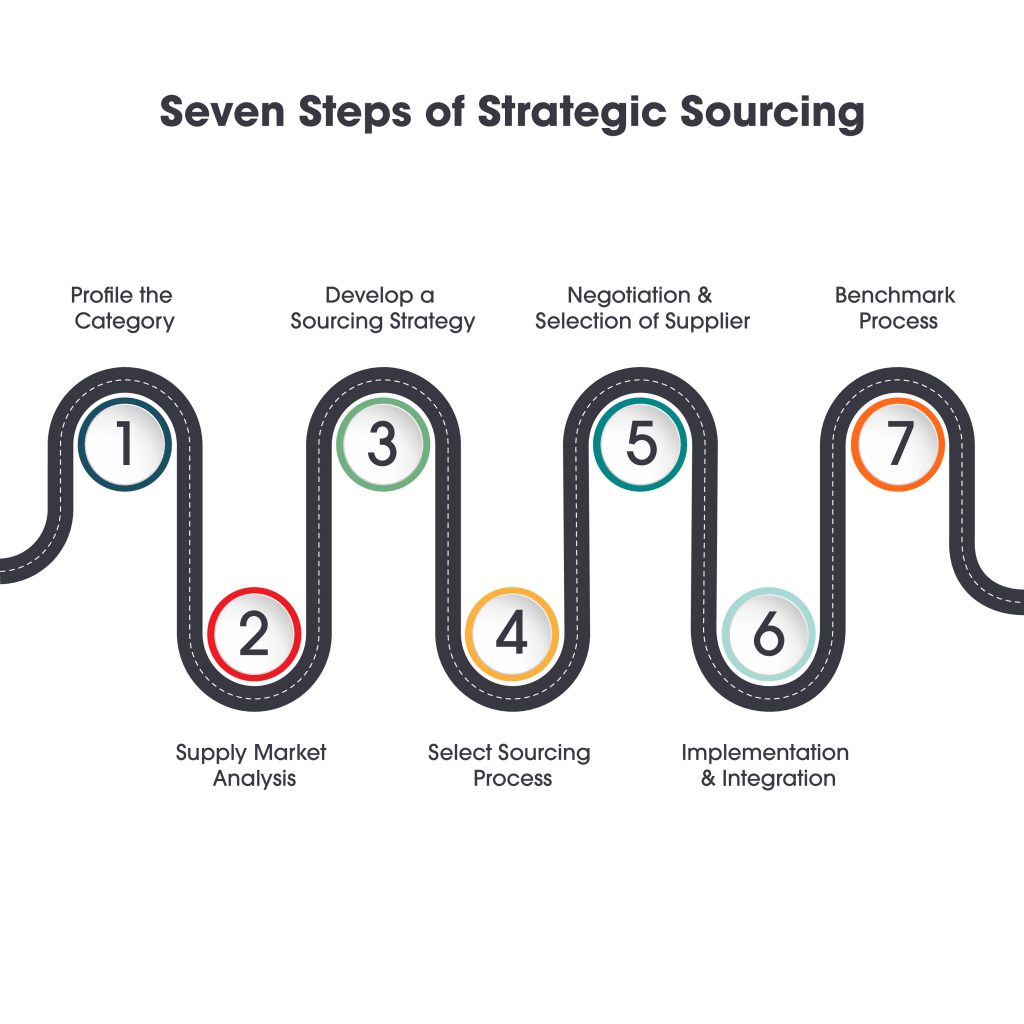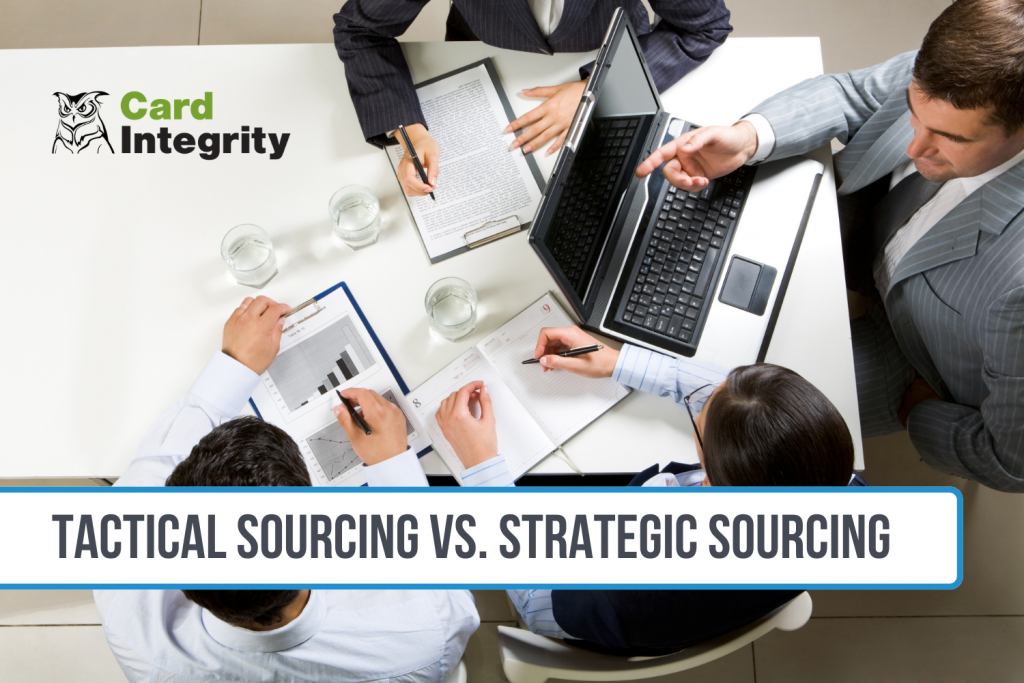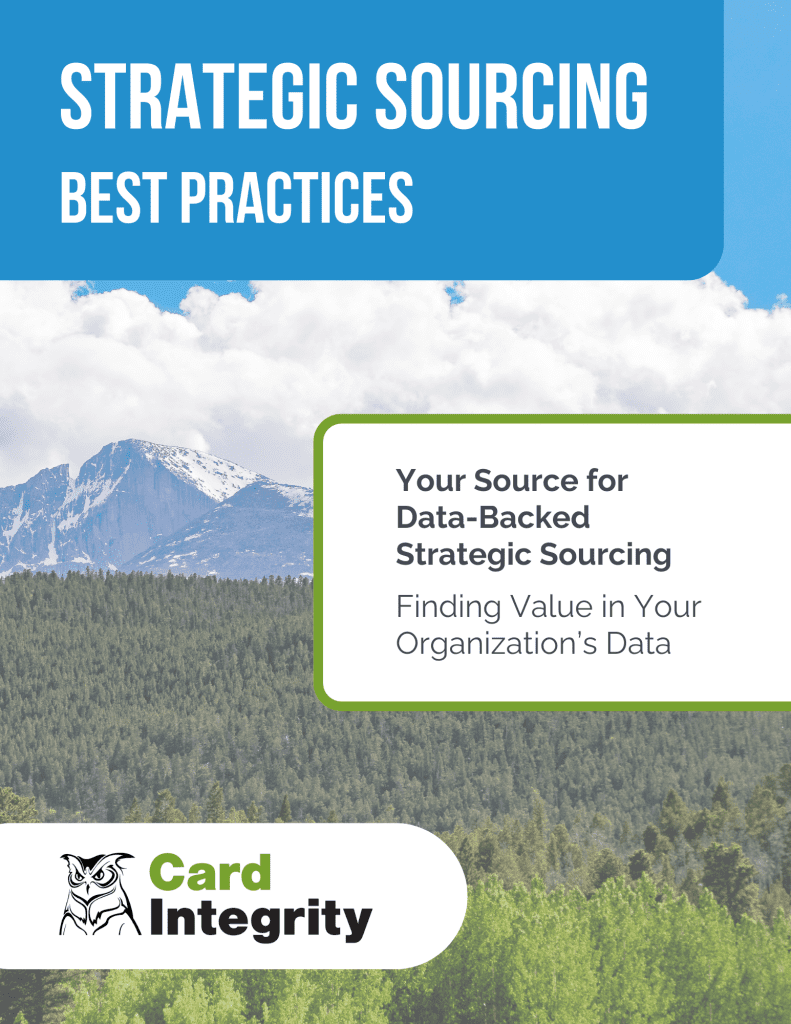Sourcing strategies tend to fall under two major categories. The differences between the two are clear and well-defined, but there is less consensus about use cases for each of them. A lot of it depends on the exact organization, its goals, and directives from that organization’s C-Suite. In this blog post, we’ll define both tactical and strategic sourcing, and scenarios when one tends to be used over the other. We’ll also discuss resources that can help you to achieve your goals.
Strategic sourcing
Strategic sourcing is the process of taking a look at what goods and services your organization needs to run most effectively, and is implemented by taking a look at all available options and optimizing the spend of the organization. You’ll often hear the word “holistic” used in conjunction with strategic sourcing, and for good reason. It takes into account the entire organization’s long term goals, and is proactive rather than reactive. It focuses on the “whole, big picture”, including contract negotiation, strong supplier relationships, cost reduction strategies, and process design. This requires significant time and planning. And it requires a thorough understanding of the organization’s data to make informed decisions. It is especially used when an organization wants to improve its TCO (total cost of ownership).

Tactical sourcing
Tactical sourcing can be broadly defined as purchasing which is “short term”, “transactional”, “reactive”, and done on a need-by-need basis. You may also hear it called operational buying or operational sourcing. When you’re sourcing based on price, delivery time, availability, and not much else, you’re engaging in this type of sourcing. It is common with smaller organizations, and is not done with the bigger picture in mind.
When defined right after strategic sourcing, it certainly sounds like a bad thing. But procurement professionals know that tactical sourcing has its place. Smaller organizations often don’t have the bandwidth to implement a strategic sourcing approach. And even at larger organizations, circumstances can make it so that they need to pivot to focus on immediate needs.
Pros and cons
Strategic sourcing is the preferred method for larger enterprise businesses with the resources (such as a robust ERP system) to pull it off. A good strategic sourcing strategy aligns with an organization’s long-term business objectives and is less risky to its supply chain. It also incentivizes strong, healthy supplier relationships. However, it requires buy-in from the top and for an organization to really know its data.
Tactical sourcing may make more sense for a smaller business whose buyers don’t have a lot of time or direction from the top. Some organizations buy what they need, when they need it, and long-term goals are less of a priority. For lower risk purchases, it has its place. The lack of long-term planning makes it difficult to justify when high-risk, high-value purchases are involved.
Getting more strategic about your sourcing: Sourcing eGuide from Card Integrity
To learn more about how to tackle the challenges of strategic sourcing, download our free eGuide, Strategic Sourcing: Best Practices. This eGuide is jam-packed with solutions to common challenges, like getting solid proof-of-concept, supplier relationship management, managing supply risks, and more.




